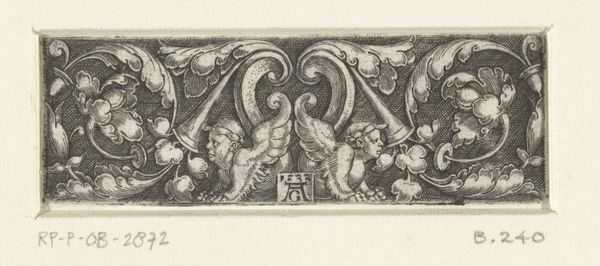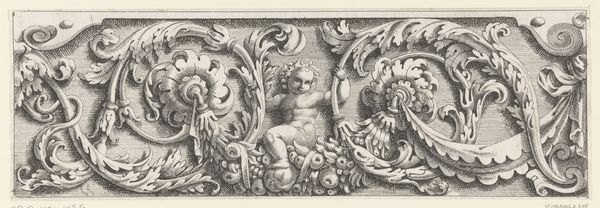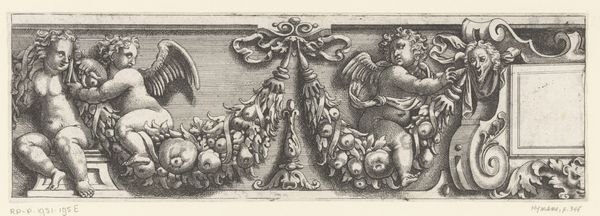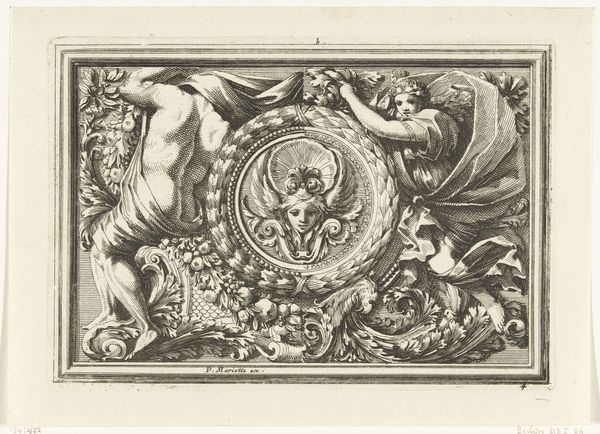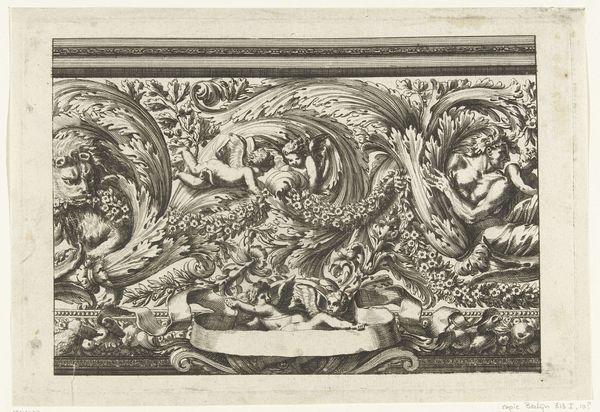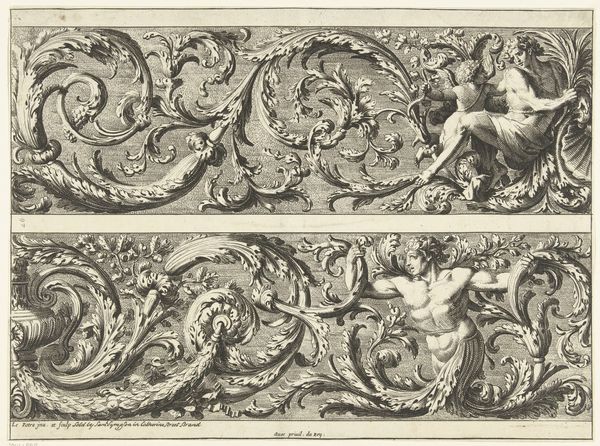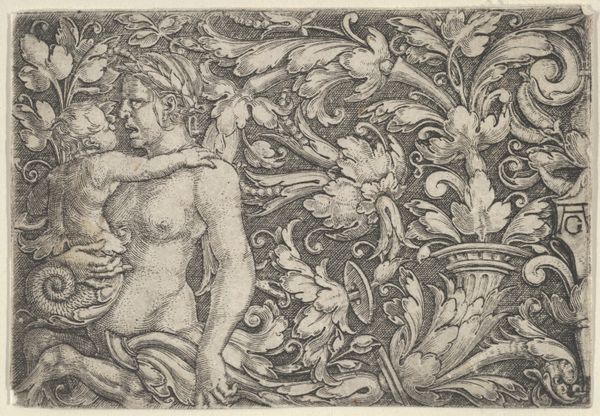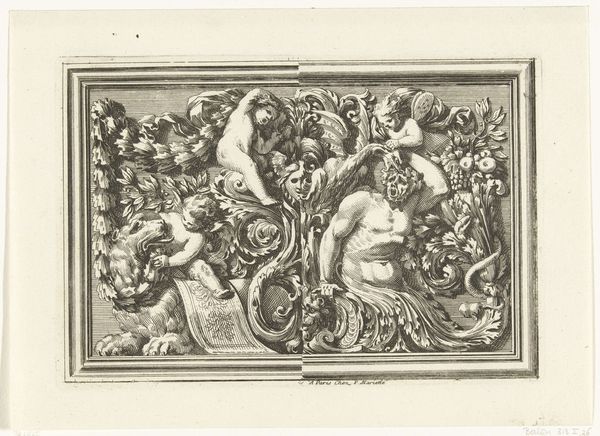
print, engraving
#
shading to add clarity
# print
#
pen sketch
#
old engraving style
#
hand drawn type
#
figuration
#
11_renaissance
#
child
#
ink drawing experimentation
#
hand drawn
#
pen-ink sketch
#
thin linework
#
pen work
#
northern-renaissance
#
engraving
#
initial sketch
Dimensions: height 22 mm, width 127 mm
Copyright: Rijks Museum: Open Domain
Curator: Immediately, the intricacy grabs me—it feels almost claustrophobic, yet the details are so delicately rendered. Editor: We're looking at "Fries met twee kinderen tussen bladranken," an engraving made in 1536 by Heinrich Aldegrever. It resides here at the Rijksmuseum. What we see here is, literally translated, "Frieze with Two Children Amidst Leafy Tendrils". Curator: Yes, "Leafy Tendrils" it is, as they're practically swallowing the children. There's this dynamic contrast, though; the playful, chubby figures against the rigidity of that formalized border. Editor: I’m struck by the cultural context. During the Renaissance, the rise of the printing press democratized art, making pieces like this accessible to a wider audience beyond the elite. Curator: Absolutely. This print, given its dimensions, likely functioned as a decorative element. The children themselves, these putti, would have held symbolic weight, perhaps representing innocence, love, or even prosperity depending on its usage and display. The detail is remarkable; you can practically trace the artist's hand as they navigate the etching needle across the plate. Editor: See, the artist uses only line to achieve this sense of depth. Note how the varying densities and cross-hatching create tonal shifts that convincingly model forms like the plump cherubic bodies and swirling vegetation. Aldegrever's Northern Renaissance style blended German artistic tradition with classical influences that filtered north. Curator: True. We can't divorce it from its time, shaped by social shifts, patronage desires, and technical advancements. Did these figures suggest, perhaps, commentary on wealth or even familial anxiety amidst a period of rampant disease, where child mortality was considerably high? Editor: Interesting point! And to analyze how the artist achieves the emotional impact through technical means allows the piece to truly live for viewers in any place or age. The composition's compact dynamism brings that vision into being. Curator: Understanding art history gives you the key to asking these pertinent questions, linking artistic creations to real-world narratives and influences. Editor: Indeed, and sometimes all it takes is a close, appreciative study of shape and line to begin asking!
Comments
No comments
Be the first to comment and join the conversation on the ultimate creative platform.

